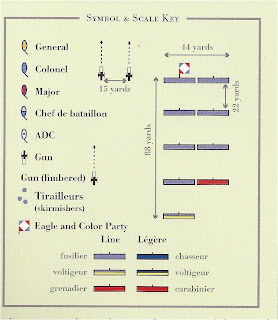Location: Northwest Iberia, Portugal South of The Duero River
Situation: Opposing Forces Contest The Coast Road
Purpose: Fictional campaign novel adapted from actual historical events.
Recommendation: See previous Chapter 4: Battle of Aveiro
http://barnapoleon.blogspot.com/2013/08/chapter-4-battle-of-aveiro.html
----------
Memoirs of ADC Captain Siggins
"I have the honour to provide general dispositions of opposing French and British armies along the Rio Duero after the 3 March 1809 Battle of Aveiro, Portugal. Marshall Soult's advance down the coast road to Aveiro had resulted in a repluse. Afterwards General Pettygree slowly followed the French withdrawal almost to the river. Appended maps show relative positions as forward units ebbed and flowed along a somewhat quiet front."
"Though not shown, the French had small bridgeheads south of Oporto and Vila Real. The divisions most bloodied at Aveiro, Merle and Kinch, were removed to the rear to recover from severe losses on the 3rd instant. Neither army was favorably disposed to stir or fight until...."
"The 21st when Soult moved his bridgeheads forward. Below Oporto Delaborde's fresh division with combined arms pressed forward to take up better defensive positions. At Vila Real vigorous mounted elements scouted forward. General Pettygree, himself positioned to the westward, ordered the army to retire to original Aveiro positions picking up needed reinforcements marching north on the coast road. It appeared Soult was playing his next card."
Two days later General Pettygree planned to attack Delaborde whilst the 1/KGL protected the far right flank. However, the clever Delaborde attacked instead as the General marched forward.
FRENCH LEFT FLANK WAS REFUSED
General Delaborde (Michael M.) anchored his left flank in the clerical enclosure of San Sebastian de Duero.
The enclosure was never contested by the British though some howitzer shells landed near the wagon.
Very late in the afternoon Roxton's (Andrew) Brigade of Portuguese swung left to face the enclosure. Here we see Roxton hours before and...
Sometime later as it swung forward. The enclosure is off image to the upper left.
BRITISH LEFT FLANK - ACTION WAS HOT HERE
British red coats and French blue coats march toward each other.
The French (Dan W.) pressed heavily forward. Brigadier Kinch (John M.) eventually deployed clouds of skirmishers to slow them.
On the other side of the ridge at the top left of the image more French surged forward commanded in....
THE CENTER
By General de Brigade Scruby. This is a 30mm Jack Scruby casting from Jack's personal collection now cared for by Mike T. of Historifigs. Mike sells Scrubys and was present with son Liam at the game after a long hiatus.
Brig. Scruby (Mike + Liam T.) urge their men forward from starting positions 1' on the Main Table.
Scruby's men advanced upon a farm and other buildings at the top right of the image where Brigadier Sinclair (Der Alte Fritz - Jim P. of Minden-Fife and Drum Miniatures) commanded.
Liam would be successful in storming the buildings. Brig. Sinclair withdrew his red coats to the Back Table to the lower left of the image.
Continuing deeper into Brigadier Sinclair's position came more French commanded by Michael M.
General Pettygree, I and a courier from Brigadier Sinclair were conferring when French voltigeurs suddenly came forward. (We weren't paying attention!) I wonder if Michael M. quietly noticed this.
The near building was the right extremity of Brig. Sinclair's line. In the distance you see the French high water mark from the previous four images.
Roxton's Brigade from the early portion of my narration is several feet away from the lower right of the image. The clerical enclosure fronts the near farm about three feet away to the right.
Roxton's Brigade from the early portion of my narration is several feet away from the lower right of the image. The clerical enclosure fronts the near farm about three feet away to the right.
Off the left of the image are Brigadier Young's (Bill P.) three uncommitted battalions. One, the 4th Foot deployed late in the day to the left of the farm to support Brigadier Sinclair.
----------
1) Rules were a private adaptation of Batailles de l'Ancien Régime 1740-1763 for Napoleonic Iberia. We continue to work out nuances for Iberia such as introducing intervals between Columns of Divisions, squadrons, regiments in line and so forth. Read your Chandler pp. 342-353, if you please. Eleven turns were played from 11 a.m. to 4:00 p.m. with a break for lunch.
2) French: CinC Michael M., Mike T., Liam T. and Dan W. British: CinC Bill P. (yours truly), Jim P., Chuck L., John M and his young nephew Andrew. Liam and Andrew were bright and brand new youthful participants. We hope they will return. Dan brought oodles of new French from his collection for the first time - many from his late father. Thank you everyone!
3) Who won? I have no idea. Neither side captured the other's road exits on respective Back Tables. The British stopped their attack when they saw the French onslaught. The French onslaught reached a high water mark and then withdrew. Stalemate perhaps. It happens.
4) The game was filled with self-inflicted fog of war situations, misunderstandings and intentional delays using couriers.
5) The table covering is from The Terrain Guy who has stopped business operations.
6) Your remarks are sought and welcome below. I have the honour to respectfully be Your Obt. Servant, Bill P. writing as Captain Siggins.
----------


















































